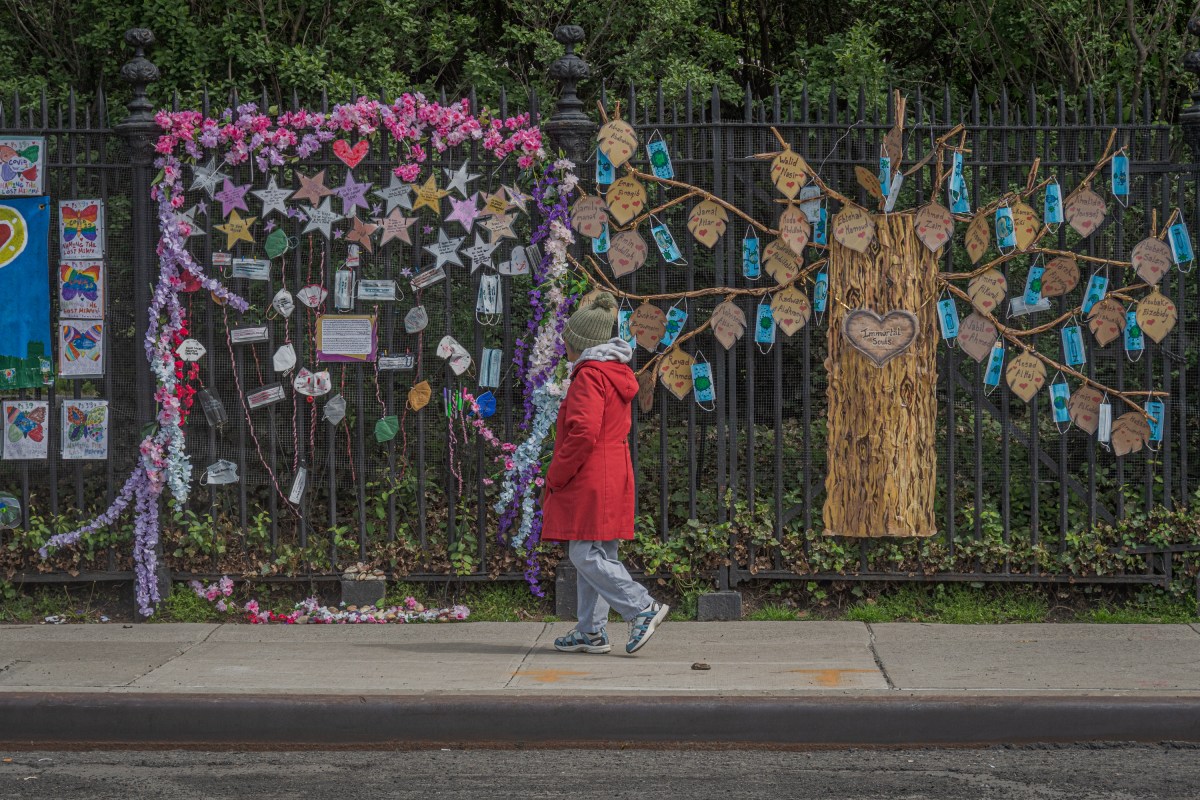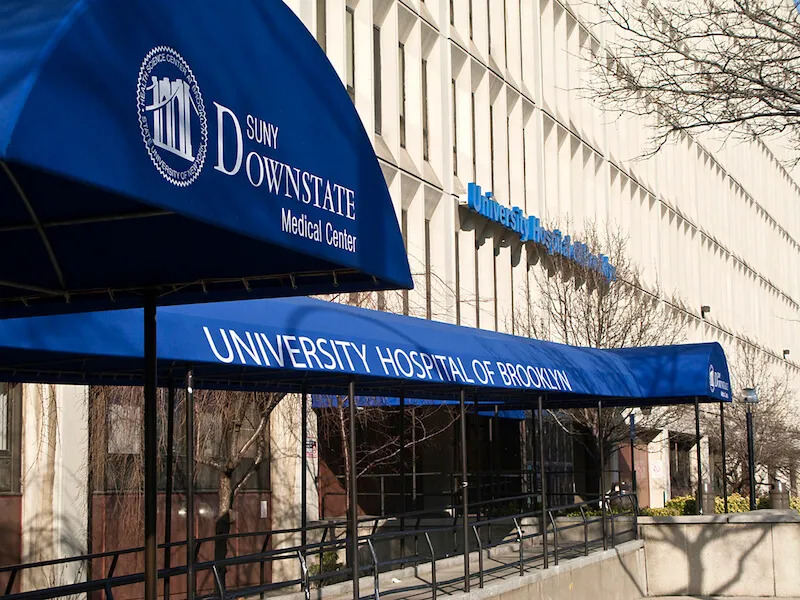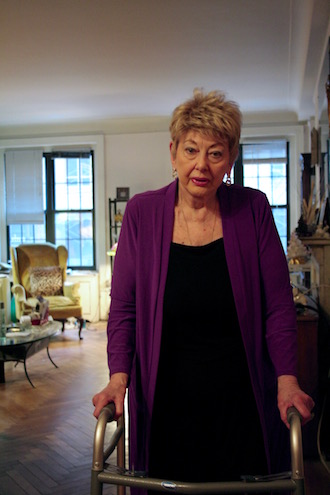
BY EILEEN STUKANE | Staying healthy while staying put has become an unseen battle raging in many residential buildings on Manhattan’s West Side.
With Hell’s Kitchen having emerged as a high-rent, luxury neighborhood, many landlords, seeing dollar signs, are determined to transform their rent-regulated apartments into market-rate units. The landlord/ developer drive to vacate apartments seems unstoppable, even though residents frequently decline to move and refuse to be bought out. Landlords often proceed with demolition and construction plans in such buildings regardless, knowing that a certain number of tenants will eventually become aggravated enough to leave. The ones who remain in their homes often have to live in an environment of dust and debris that has given rise to the term “harassment by construction,” an insidious assault on the health of longtime residents.
Tenants can organize to stand their ground and remain in their homes. At times, this requires that they navigate the maze of New York City’s bureaucracy to uncover falsified Department of Buildings (DOB) permit applications submitted by their landlords identifying their buildings as “unoccupied” in order to dodge the requirement for a Tenant Protection Plan. Tenants can also enlist elected officials and community leaders to assist them in battling unethical landlords. But their real fight may be the struggle to remain healthy enough to withstand the environmental stress heaped on them.
In one West Side building, four of 13 tenants were determined to stay in their homes when a new owner began renovations in 2014.
“People couldn’t walk into the building with the white dust coming out,” said one of those residents. “I had asthma and immediately had to get a mask just to walk in the front entrance. The apartments looked white inside, the way the streets looked after 9/ 11. You could see footprints on the floors and a lot of people were having breathing problems. I myself was having breathing problems and I’m a healthy athletic guy. I go to the gym, run track — and I started getting sick. If I, a healthy person in my 30s, was suffering, I can’t imagine what a senior citizen would suffer.”
Those who live in buildings with ongoing construction and are in dispute with their landlords spoke on the condition of anonymity in order to avoid further jeopardizing their situations.
Two of the four tenants who originally committed to stay in this West Side building eventually moved out.
Interviewing residents who have experienced harassment by construction, it became clear that many rent-regulated apartments that landlords would like to convert to market-rate are occupied by seniors who have lived in their homes for decades. Having found refuge within their apartment walls, these men and woman have roots in the community and have no desire to relocate. At ages when many of their peers are relaxing in warmer climes, they are breathing in dust, mold, and toxic fumes, living with insect infestations and mice, and enduring the noise of jackhammers outside their apartment doors. Some described suffering panic attacks from fear of intruders entering unsecured premises.
Even when landlords post the DOB’s required Tenant Protection Plan, the obligations often go ignored and unfulfilled.
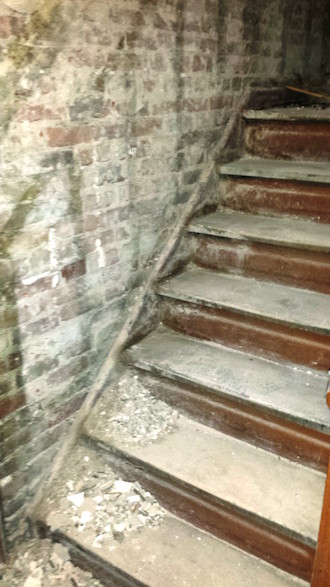
The Community Health Profile 2015, recently released by the city’s Department of Health and Mental Hygiene, reports that the air in Manhattan Community District 4, which includes Hell’s Kitchen as well as Hudson Yards and Chelsea, ranks third highest when measured for levels of particulate matter (PM2.5), the most harmful pollutant, at 11.4 micrograms per cubic meter. The US Environmental Protection Agency’s National Ambient Air Quality Standards have established a limit of 12 micrograms per cubic meter, which is set to protect the health of asthmatics, children, and seniors. The air in West Side construction sites does not have far to go to surpass the EPA’s acceptable level of pollutants.
PM2.5 is made up of fine particles and liquid droplets often found as a result of construction, in dust — which may contain lead, organic chemicals, and metals. Children, who breathe more rapidly than adults and often through their mouths, can inhale more of these fine particles into their lungs. Long-term exposure to fine particles, for adults and children alike, can irritate the airways, affect lung function, and cause coughing which is sometimes chronic, difficulty breathing, and asthma. Of the residents interviewed for this article, all reported coughs, some lingering well after construction was completed.
In 2014, Healthy Building Network, a Washington-based organization dedicated to reducing the use of hazardous chemicals in building products, published “Asthmagens In Building Materials: The Problem and Solutions,” an overview of studies correlating the link between asthma risk and volatile compounds called phthalates and isocyanates that are found in a variety of building materials, such as insulation, paints, adhesives, wall panels, and floors.
According to Jim Vallette, the research director at Healthy Building Network, the practice in the green building industry when renovating a structure is to empty a residence for two days, with doors and windows open, to “flush out into the air” the toxic effects of paints, adhesives, and polyurethane in foam insulation to reduce the environmental impact for residents. That would be a tall order in a multi-unit New York City apartment house. Using paints certified as low in volatile organic compounds is also recommended.
While scientific research to identify pollutants has not been conducted comprehensively in buildings under construction in New York, Stand for Tenant Safety, a citywide coalition of community organizations fighting to protect tenants from harassment by construction, has been gathering data. STS published a 2015 Summary of Data that identified health-related situations created by construction.
In the STS survey of 150 residents living in buildings where construction was ongoing, 87 percent reported excessive dust, which was the greatest complaint, followed by excessive noise at 82 percent. Overall, 71 percent stated that construction was a threat to their health and safety. Vermin (44 percent), inaccessible fire escapes (14 percent), excessive fumes (42 percent), construction debris (73 percent), and building doors left open or unlocked (74 percent) were all listed as concerns by residents.
City Councilmember Corey Johnson, who represents the area and is chair of the City Council’s Health Committee, is well aware of the health dangers that result from what he agrees is “harassment by construction,” and has responded with support and proposed legislation to combat the situation.
“It is undeniable that unsafe construction causes conditions that impact the health of tenants,” Johnson wrote in an email. “Too often, landlords perform construction work without proper permits and without basic safeguards. Every week, my office hears from tenants who are negatively impacted by construction in their buildings, and we respond aggressively to every report.”
The Department of Buildings, he said, “currently lacks the resources and bandwidth to fully enforce tenant protection laws.”
The Council, since last September, has been considering a 12-bill package of legislation to reform Department of Buildings practices and help protect victims of abusive landlords.
With Upper West Side Councilmember Helen Rosenthal, Johnson is co-sponsor of a bill that takes aim at landlords making false claims that their buildings are unoccupied when applying for building permits.
According to Rosenthal’s office, the reform package got its first hearing before the Council’s Housing and Buildings Committee on April 18. A second hearing will take place before the measures go to the floor for full Council consideration.
In the meanwhile, residents under siege confront not only risks to their physical health but stress and anxiety that take their toll on their mental health as well.
“I was never anxious,” reported one West Side man. “I think I have a wonderful life, and I was having nightmares.”
Another West Sider, after undergoing chemotherapy, had to move to a relative’s house in another state to strengthen his immune system away from the worry of what each day would bring in terms of building construction, including mold that could cause infection if inhaled.
“When they started working on apartments, they tore out windows and left them open,” said a woman who lives on the West Side. “I used to walk up and down the stairs with pepper spray ready to use. I was one of four left in the building and I was the only woman. I live on the fifth floor. I was terrified walking up the stairs at night. It felt desolate, scary being in a building that’s empty like that.”
When construction ended in her building, she became calmer.
“I can sleep at night,” she said, and no longer worries about debris falling from a floor above and hitting her in the face when she climbs the stairs, as happened during the construction.
Marilyn Hemery has lived peacefully in her third floor apartment at 15 West 55th Street for 45 years. Today, she is battle-weary. Two years ago, her building and the adjoining property at 19 West 55th Street property were purchased by Assa Properties Inc., renovated, and turned into the Branson. Hemery’s building had 37 apartments on 10 floors. Today there are only seven occupied apartments.
“I am the only tenant on the first five floors,” said Hemery, who refused a buyout offer of $225,000, when, according to her, Assa was leasing its renovated apartments for $6,000 a month.
“I have mice in my kitchen and have to leave lights on 24 /7,” she said.
Hemery, who is recovering from chemotherapy, also has to deal with constant layers of dust and a cough.
“There was asbestos in the building and the owners never put a notice where anyone could see it,” she explained. “It was hidden. There is supposed to be a Tenant Protection Plan but they do not live by it. They have their own plans.”
Hemery and other tenants have filed more 100 complaints with the city and lived anxiously as Assa Properties turned their building into what became known as “the city’s worst illegal hotel.”
With the help of State Senator Liz Krueger, tenants prevailed on the Mayor’s Office of Special Enforcement to file suit against the owners last year, which succeeded in shutting down the hotel activity.
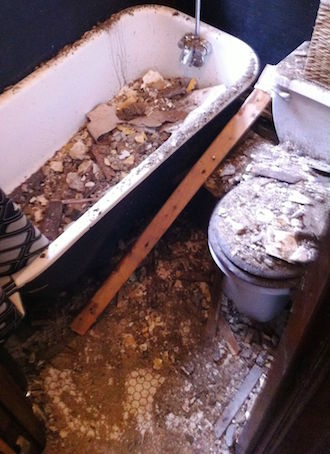
Today, 15 West 55th Street — the entire building — has been leased from Assa Properties by the fashion designer Domenico Vacca, who intends to open an 8,000-square-foot store and create a members-only club, barber shop, café, beauty salon, rooftop terrace. The apartments will be leased for long-term residence stays of 30 days or more — all in a building that had cooking gas shut off for seven months, from August 2015 to March 2016.
“We’re invisible to them,” Hemery said.
Unfortunately, the situation at 15 West 55th Street was not unusual. Shutting off cooking gas, as every tenant interviewed for this article corroborated, is a widespread landlord harassment tactic.
This despite the fact that the New York State attorney general’s “Tenants’ Rights Guide” states that tenants “have the right to a livable, safe, and sanitary apartment, a right that is implied in every written or oral residential lease… Examples of a breach of this warranty include the failure to provide heat or hot water on a regular basis, or the failure to rid an apartment of an insect infestation.”
Con Edison usually turns gas off for a reason — a leaky pipe, a broken stove, an unexplained gas smell. It is then up to the landlord to hire a master licensed plumber to do the needed repair and call Con Ed back for inspection. But a landlord looking to harass tenants need simply not hire the plumbers to make the repairs.
In Hemery’s case, she made do with an electric skillet for more than six months.
Appalled by the frequency of reports of cooking gas shutoffs in Manhattan, Borough President Gale Brewer, in March, wrote a letter requesting a full report of all buildings without gas service to Con Edison’s CEO John McAvoy, the city’s Departments of Buildings and of Housing Preservation and Development, Attorney General Eric Schneiderman, the State Public Service Commission, and the State Division of Homes and Community Renewal.
While her office follows up with Con Ed and the city and state agencies Brewer contacted, she said she is “pleased” that city councilmembers have introduced “carrot-and-stick” approaches to address the problem.
Two measures proposed by Brooklyn Councilmember Jumaane Williams, Intro 1101 and Intro 1102, would “give landlords an incentive to quickly fix illegally installed or modified gas piping systems,” but also “reclassify many gas-related code violations as ‘immediately hazardous,’” Brewer explained. “If passed, these changes will spur landlords to act more quickly to fix hazardous gas systems, removing an obstacle to Con Ed restoring service for many tenants.”
Meanwhile, a bill sponsored by Lower East Side Councilmember Rosie Mendez, Intro 1093, “would require the Department of Buildings to be notified within 24 hours when gas service is suspended for safety reasons.” This, Brewer said, is simply “common sense.”
There are government resources that tenants in distress can immediately access. The state AG’s “Tenants’ Rights Guide” has four pages of state and city resources residents can access, and Schneiderman’s hotline is 800-771-7755.
The city’s Rent Guidelines Board also has information on tenants’ rights and resources.
The city’s 311 service can direct complaints to the Department of Housing Preservation and Development (HPD), which can either investigate them or direct them to the appropriate agency, which may be the Department of Buildings, the Department of Environmental Protection, or the health department.
Jeremy House, a health department spokesperson, said, “When there are pollutants in the air or dangerous materials, we would definitely issue a violation. We also coordinate with HPD. As part of the Healthy Homes Program, we take more aggressive steps if children are involved.”











